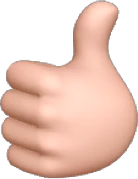Essay, APA, College, 6 pages, 2 sources
The criminological theories essay example below was developed with the CRJ 3800 course in mind. It masterfully illustrates how even a mainstream movie can be used to describe essential issues in modern society. Read it to borrow the best content organization practices and literary techniques. Alternatively, if you need practical help with a similar essay on criminological theories or any other academic paper, you can address our essay writing service and get quick and affordable assistance within days or even hours.
Criminological Theories Analysis after the “Traffic” Movie
Understanding the factors influencing the prevalence of crime in societies is important as it helps to introduce measures of preventing and mitigating the problems. There are numerous factors that influence a person’s decision to be involved in criminal behaviors, and some are conscious or unconscious of the influencing factors. The theories covered in this paper are conflict and rational choice. Conflict theories are based on social factors that impact the functioning of societies and present a collective explanation of why people might commit crimes. On the other hand, the rational choice theory is individual since the benefits and constraints of the factors in committing a crime vary from one person to the other. The theories will be used to explain various criminal activities and human behaviors observed in the film “Traffic.” Overall, conflict theory is the most suitable way of explaining criminal behaviors as it takes into consideration the complexities of society caused by social, economic, and political factors.
The conflict theory is based on the paradigm of social organization where society is classified into various social groups, and there is no consensus on societal values and norms, and the position of power of people in a given social group influences how the values impact them (Morin, 2014). The conflict theory argues that based on the classification of social groups, some people have ruling power which they use to enact laws that protect their own interests instead of the collective good. Conflict theory comprises three main theoretical perspectives. Firstly, group conflict theory is based on the idea that society is characterized by conflict. The society comprises such groups as classes that share common economic interests; parties that share common political interests; and status groups that share common values and interests (Morin, 2014). Secondly, critical theory is based on social organization, social conflict, and economic conditions in which aspects of society are based on economic power that shaped social arrangements, for example, laws. In this theory, crime comes from the deprivation and alienation of people without economic power. Thirdly, feminist theory is a perspective of conflict theory based on the idea that patriarchy promotes male dominance and women are oppressed and affected by inequities in society. The conflict theory argues that crime occurs as a result of inequities present in a group and people’s revolts against the current system that push for changes to attain equality.
The rational choice theory will help explain the prevalence of crime in societies. The theory is based on the idea that there is no compelling motivation for criminal acts. Rather, people engage in criminal activities after rationally analyzing and concluding that this is an appropriate course of action due to the benefits and lower costs in comparison to non-criminal activities (Hudik, 2019). The probability of conviction lowers the chances of someone committing a crime since the cost is higher than benefits. According to Hudik (2019), one can compare the decision and price of the rational choice theory to determine the aspects that motivated a person to commit a crime. Important aspects of the theory include rational actors, self-interests, and the ‘invisible hand.’ These aspects are influenced by factors such as individual preference, beliefs, and constraints. A person must understand available preferences and how they suit their self-interests before examining the benefits and constraints of making the decisions. According to this theory, people commit crimes because this suits their interests and beliefs, as well as the ease and benefits accrued from these actions.
Application of the Theory in the Movie “Traffic”
Conflict and rational choice theories are applicable in analyzing the movie “Traffic” as they present explanations of why people perform criminal activities. Conflict theory explains the social classification that causes people to commit a crime. The people in power influence the law to protect them and avoid conforming to values of the collective good. For example, in the movie, Mexican General Salazar uses his power to influence the law and eradicate a cartel for the benefit of another cartel instead of the collective good of his country. Having a high social class, the general has sufficient influence to utilize resources such as drug enforcement officials to push his agenda of eliminating a cartel. The actions can also be based on the rational choice theory, where the decision to work with one cartel and eradicate another is based on examining the constraints and protecting self-interests. Through rational choice, one opts for a path that ensures they acquire benefits and avoid the consequences of their actions. The character of general Salazar in the movie fits this profile since his decisions to work with cartels and use state resources for personal gains are based on analyzing the expected benefits over the costs.
Besides, the system of drug trafficking is based on both theories where people engage in criminal behaviors as both deviance and rational choice. In Wakefield’s storyline of the movie, high school students are seen using drugs which is a reflection of both theories, too. According to the rational choice theory, one examines the costs and benefits of getting involved in a crime before rationalizing the decision based on the outcomes. In this case, students have higher chances of accessing and affording hard drugs such as cocaine and heroin in comparison to alcohol. Hence, using drugs is the most rational decision based on the price since they are cheaper and easier to access. Similarly, based on social classification, students rank low socially and economically, they feel unheard, and their use of drugs is a way of finding their voice to push for change. Robert Wakefield’s daughter Caroline complains about the social dynamics within her family while her mother argues that using drugs is part of being a teenager and young adult as a way of pushing past the boundaries of society. In particular, the scenes in this part show that people commit crimes by choice as well as other forces caused by social classifications.
The movie comprises various parts of the supply chain and other aspects of the drug trade. The ‘society of the drug trade’ includes users, enforcers, traffickers, lawyers, and politicians. These people hold different levels of power within the system. Those with higher positions use their influence to enforce rules focused on their own benefits, while those in the lower level of the system focus on making changes the way they see fit. The system can be explained using conflict theory. Critical conflict theory argues that people commit crimes due to deprivation or alienation, which can be used to explain high school students’ behavior who freebase the drugs to increase their impact on a body. These aspects can also be explained through the rational choice theory, where the users choose to increase the impacts of drugs for their benefit. The politicians argue that the war on drugs failed and make a rational decision to do nothing about the existing laws which limit the actions that can be taken against drug cartels or traffickers. Besides, politicians are aware of the benefits drugs have on the economy, and hence, in the Wakefield’s storyline, their actions of failing to implement better laws can be explained through group conflict theory. In the DEA storyline, the planned killing of Eduardo Ruiz by his wife Helena shows that crime is based on both rational choice and conflict theories. Based on rational choice, the wife will benefit from reduced threats once the husband is gone. At the same time, based on the conflict theory, the wife would gain the power necessary to control drug trafficking since the husband cannot give them up to the DEA. Therefore, these theories explain why crime occurs in the movie.
Conflict and rational choice theories provide adequate explanations of why people commit crimes, their motivations, and expected outcomes. The conflict theory is the most suitable for explaining why people commit crimes. Unlike rational choice theory, which is based on individual beliefs and self-interests, the conflicts theory takes into consideration the complexities of society based on economic, social, and political factors. Morin (2014) presents the social, economic, and political perspectives of conflict theories and the factors that influence criminal behaviors. The theory is suitable for explaining crime in the movie since it can present the social, economic, and political aspects of societies described in the movie. Therefore, the theory of conflict is suitable in criminology due to the inclusion of important aspects of society.
In conclusion, the conflict theory presents an explanation of how social, economic, and political factors influence the prevalence of crime based on the social classification of society. Society is classified based on gender, race, age, religion, and people with influence and power impact the direction of economic and political powers. The rational choice theory involves examining the benefits and constraints of a decision before committing a crime. The movie “Traffic” presents crime in various societies through three storylines: Mexico, Wakefield, and DEA. The human behaviors and criminal activities observed in these scenarios can be explained through the conflict and rational choice theory.
References
Hudik, M. (2019). Two interpretations of the rational choice theory and the relevance of behavioral critique. Rationality and Society, 31(4), 464-489. https://doi.org/10.1177/1043463119869007
Morin, R. (2014). Conflict Theory. The Encyclopaedia of Theoretical Criminology, 1-4. https://doi.org/10.1002/9781118517390.wbetc124





